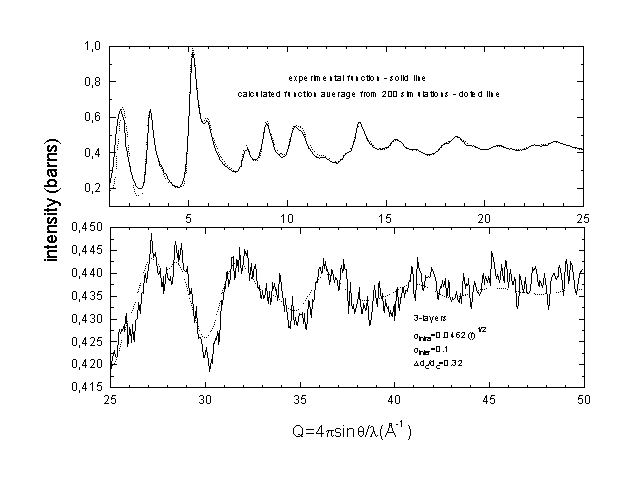
STRUCTURAL STUDIES OF ACTIVATED CARBONS BY WIDE-ANGLE NEUTRON SCATTERING
A. Szczygielska, A. Burian, J. C. Dore and W. S. Howells
1Instytut Fizyki, Uniwersytet Slaski,
ul. Uniwersytecka 4, 40-007 Katowice, Poland
2School of Physical Sciences,
University of Kent, Canterbury CT2 7NR, UK
3Neutron Division, Rutherford
Appleton Laboratory, Didcot, OX11 0QX, UK
Keywords: activated carbons, defected strycture, neutron scattering
Activated carbons are a class of carbonaceous materials with a very large internal surface area which allows many applications. Their structure can be described in terms of disordered graphite-like layers with very weak inter-layer geometrical correlations [1]. Although these materials have been studied by x-ray, electron and neutron diffraction, which are the most direct probe of these structures, the interpretation of the experimantal data is rather complicated due to the interplay of order and disorder in the interatomic correlations.
This paper describes the structural studies of series of activated carbons prepared from a polymer of phenol formaldehyde resin by the carbonization and activation processes with different degree of ''burn-off'' from 0 to 32% and variable porosity. The neutron scattering data were collected using the Liquids and Amorphous Materials Diffractometer (LAD) at the ISIS pulsed neutron facility of the Rutherford Appleton Laboratory. The intensities were recorded in the range of the scattering vector Q (Q =4 p sin q/l, where 2q is the scattering angle and l is the wavelength of the incident neutrons) from about 0.25 to 50 A, providing the data in the much wider angular range then that achieved in any other diffraction studies on disordered, graphite-like carbons. The main aim of this work is to establish a close agreement between the experimental and model intensity by analysis of the experimental observations in reciprocal space. The model intensity functions have been computed using Debye equation
I(Q) = (b2/N) Si=1 Sj=1 sin (Qrij)/Qrij
where N indicates the number of atoms, b is the coherent scattering length of carbon and rij denotes the distance between i-th and j-th atoms. Modelling studies have shown that the model containing 3-4 layers of about 20 A in diameter account for the experimental data. The Debye-Waler factor exp (-Q2 s2/2) with s =s0 (r)1/2 has been introduced to reproduce an observed decrease in intensity. This form of the attenuation factor suggests the paracrystalline nature of disorder within a layer according to the predictions of the paracrystalline theory developed by Hosemann and his group [2]. Additionally the paracrystalline distortion of the graphite lattice in the c-axis direction has been assumed. This kind of defective one-dimensional lattice has been generated by computer simulations with Gaussian distribution of the inter-layer spacing. The obtained results show that defective, graphite-like model reproduces all features of the observed intensities as position, amplitude and shape of the peaks in the 0.25-50A Q range. These findings are in agreement with our previous conclusions derived from analysis of the experimantal data in real space [3].
